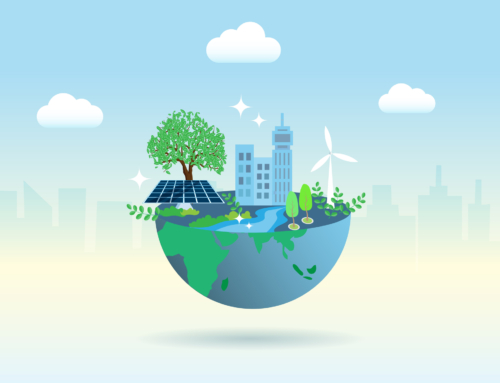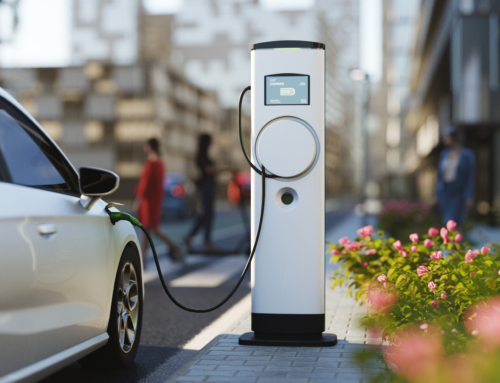What is Environmental Sustainability?
We are heavily dependent on Earth for just about everything – from necessities such as food, air, and water to intangibles like cognitive development, recreation, and cultural and spiritual significance. There is no doubt that to sustain life not only for ourselves, but for future generations, we need clean air to breathe, clean water to drink, and land that’s free of toxic substances to live on, grow food on, and complete business functions on.
With the global population growing exponentially and the long-term effects of the mistreatment of our planet and its natural resources becoming more and more evident, environmental sustainability is critical and is something that we should all be applying to everything that we do. Environmental sustainability encompasses a wide range of different factors that are interrelated and have an impact on one another, as you will learn about later on in this post.
Overall, environmental sustainability involves the human impact on Earth and vice versa. Simply stated, environmental sustainability is responsibly interacting with the planet to maintain natural resources to allow our natural resources to be available for future generations.
Environmental Sustainability Definition
Environmental sustainability is meeting human needs without compromising the health of ecosystems and without burdening resources for future generations. This is the core guiding principle for all areas where human activity is taking place. By maintaining an even balance of environmental, social, and economic practices, we can create a way of life that is sustainable.
To ensure that we are not compromising Earth’s ecological balance, we need to make some significant changes in the way we utilize its natural resources. For us to achieve environmental sustainability, a collective effort is required – not just between governments and corporations – but also by individuals. That’s right – environmental sustainability is applicable even on an individual level, so every one of us must practice environmentally sustainable methods in our daily lives to ensure that we do not exhaust our natural resources.
The United States Environmental Protection Agency (EPA) is responsible for setting and enforcing regulations that involve environmental sustainability and protection, which cover the following:
- Greenhouse gas emissions
- Animals and wildlife habitats
- Plantlife
- Air quality
- Water quality
- Soil quality
- Hazardous waste
Environmental Sustainability Examples
Environmental sustainability is a method that should be utilized by both institutions (including corporations/government bodies) as well as individuals. As a whole, environmental sustainability can encompass many different things:
- Taking a different economic approach – This can come in many different forms: for example, sustainable architecture; the construction of green/energy-efficient buildings; permaculture, sustainable agriculture (without the use of pesticides and other toxic chemicals); using sustainable materials in the manufacturing of products (that are recycled and/or recyclable like bamboo or algae, for example).
- City Planning – This involves reorganizing infrastructure to create more sustainable cities, which can include creating eco-village and eco-municipalities by improving access to renewable resources, adding additional urban green spaces, developing low-impact transportation modes, and improving conditions for the overall community. As part of its sustainability, Spring Power & Gas contributes to organizations running different green projects, such as EarthSpark International. Operating in Haiti since 2009, EarthSpark is committed to expanding access to solar electricity. In 2012, EarthSpark launched a first-of-its-kind, privately operated microgrid in Les Anglais, a small town that didn’t previously have grid electricity. This is a great example of environmental sustainability.
- For institutions, regulating services – including air quality regulation, water purification, and waste treatment, pest regulation, disease regulation, climate regulation, water regulation, erosion regulation, pollination, and natural hazard regulation.
- The development of new technologies – Such as renewable energy, electric/hybrid vehicles, reusable materials, and so on.
- Reducing water consumption – This is something that can be done on an institutional level as well as the individual level. Some ideas for using less water at home are fixing any leaky faucets, turning off the faucet when you are brushing your teeth or washing your hands, and installing low-flow faucet aerators.
- Conserving energy – From a corporation’s standpoint, this can include choosing manufacturing and operating facilities that are energy efficient and encouraging employees to practice energy-efficient habits while at work. For an individual, it can be as simple as remembering to turn off the lights when you leave a room, or it can be as pleasant as using your kitchen appliances less by cooking your meals outside during the summertime when the weather is lovely.
- Conservation of biodiversity – As a whole, this involves respecting the natural environment and not doing anything to compromise natural habitats. For a business, it entails designing for reusability and recyclability, utilizing materials across all of its functions that maintain biodiversity, choosing sustainable energy sources, and investing in improving energy efficiency.
While sustainability might seem intimidating if it’s not a practice you’ve already been applying in your daily life, making sustainable decisions is quite easy. On an individual level, some other examples of environmental sustainability can include:
- Refusing single-use plastics – This includes plastic straws, plastic grocery bags, plastic beverage bottles and/or cups, packaging, and so on
- Using reusable products – From drinking bottles/straws, coffee cups, cutlery, and plates, to shopping bags and cleaning rags, there are reusable alternatives for just about anything nowadays (and if there’s not, you can probably make it).
- Drive less (or not at all, if possible) – Rather than driving, opt for more Earth-friendly modes of transportation, such as bicycling or walking, for example.
- Growing your fruits and vegetables – Supplying your food is one of the many great ways you can live a more sustainable lifestyle because it allows you to take less from the environment and reduce your household food waste
- Shop local – Purchasing local, sustainable products contributes to your local economy and reduces reliance on products that have to travel a great distance to make it to your local grocery shelves.
- Support the generation of renewable energy – This is one of the easiest things you can do to reduce your carbon footprint. There are now many ways that you can do this without necessarily having to install solar panels on your roof, like choosing an energy supplier that offsets your electricity usage with RECs (Renewable Energy Certificates).
Environmental Initiatives
In addition to operating their business in an environmentally sustainable fashion, many companies have taken on different initiatives to support the environment. Some great examples of this include:
- E-Bay – Environmental sustainability is the core of its business. E-Bay has made it possible for people to exchange/reuse belongings rather than throwing them away, which both extends the lifespan of listed products and keeps them off landfills.
- Google – In addition to its green supply chain management practices and environmental sustainability, the company demonstrates its commitment to going green through initiatives like hosting farmers’ markets as well as sustainable cooking seminars and bringing goats to trim the grass.
- Dell – Dell launched its Legacy of Good Plan in 2013 with the goal of using technology to drive human progress and advance health, happiness, and prosperity. In 2020, Dell’s new Legacy of Good Plan was amended to highlight the company’s long-term commitment to society, its team members, and the environment. Dell also allows its customers to return any of its equipment (or any other brand’s equipment) to the company for free which encourages safe disposal and reduces electronic waste (e-waste).
If this post helped inspire you to apply environmental sustainability to your everyday life, then be sure to follow our blog for more ideas on sustainable living, energy conservation, and more!




![Top 11 Sustainable Building Practices for Eco-Homes [Plus 5 Sustainable Materials]](https://springpowerandgas.us/wp-content/uploads/2023/02/iStock-181062267-500x383.jpg)

